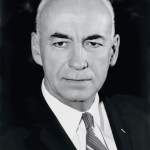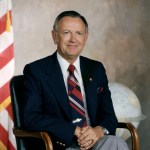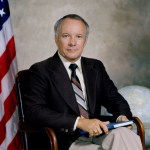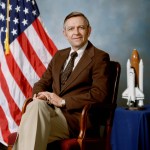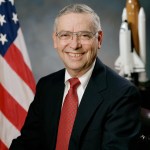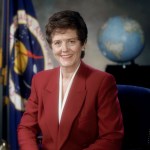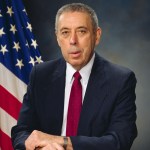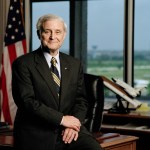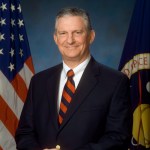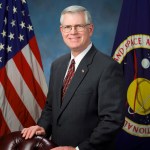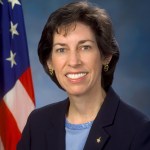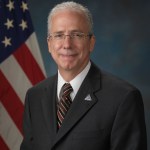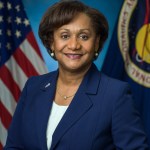
Roy S. Estess
Johnson Space Center Acting Director, 2001 - 2002
In January 2001, after a highly contested election, President George W. Bush took office and soon learned NASA’s space station was more than $4 billion over budget and might even exceed the $25 billion cap Congress passed the prior year. As the Office of Management and Budget began to scrutinize NASA spending, the president pushed the space agency to make changes. Only a month later, NASA Administrator Daniel S. Goldin announced, “it is … time for a change of leadership at the Johnson Space Center.” He named Roy Estess, then director of NASA’s Stennis Space Center in Mississippi, acting center director of the Johnson Space Center. He believed that Estess, along with Joe Rothenberg, the associate administrator for Space Flight, would “ensure a firm footing during this period.”
Estess joined NASA in 1966, at the height of the Apollo Program. He held a degree in aerospace engineering from Mississippi State University and started his career at Brookley Air Force Base as an aircraft design engineer. At the urging of a friend, he came to work at the Mississippi Test Facility. (Later that facility would become the National Space Technology Laboratories and today is called the Stennis Space Center.) He began working as a test engineer on the Saturn V second-stage test team. As Apollo testing slowed and NASA began to develop its first reusable spacecraft, the space shuttle, Estess traveled to NASA Headquarters where he convinced the administrator that his facility should be used to test the space shuttle main engines. Estess remained in Mississippi where he eventually headed the Applications Engineering Office and in 1980 became deputy director. In 1989, he became its director of the center. For a brief time, from 1992 to 1993, he worked at NASA Headquarters as a special assistant to two NASA administrators, Richard H. Truly and Goldin.
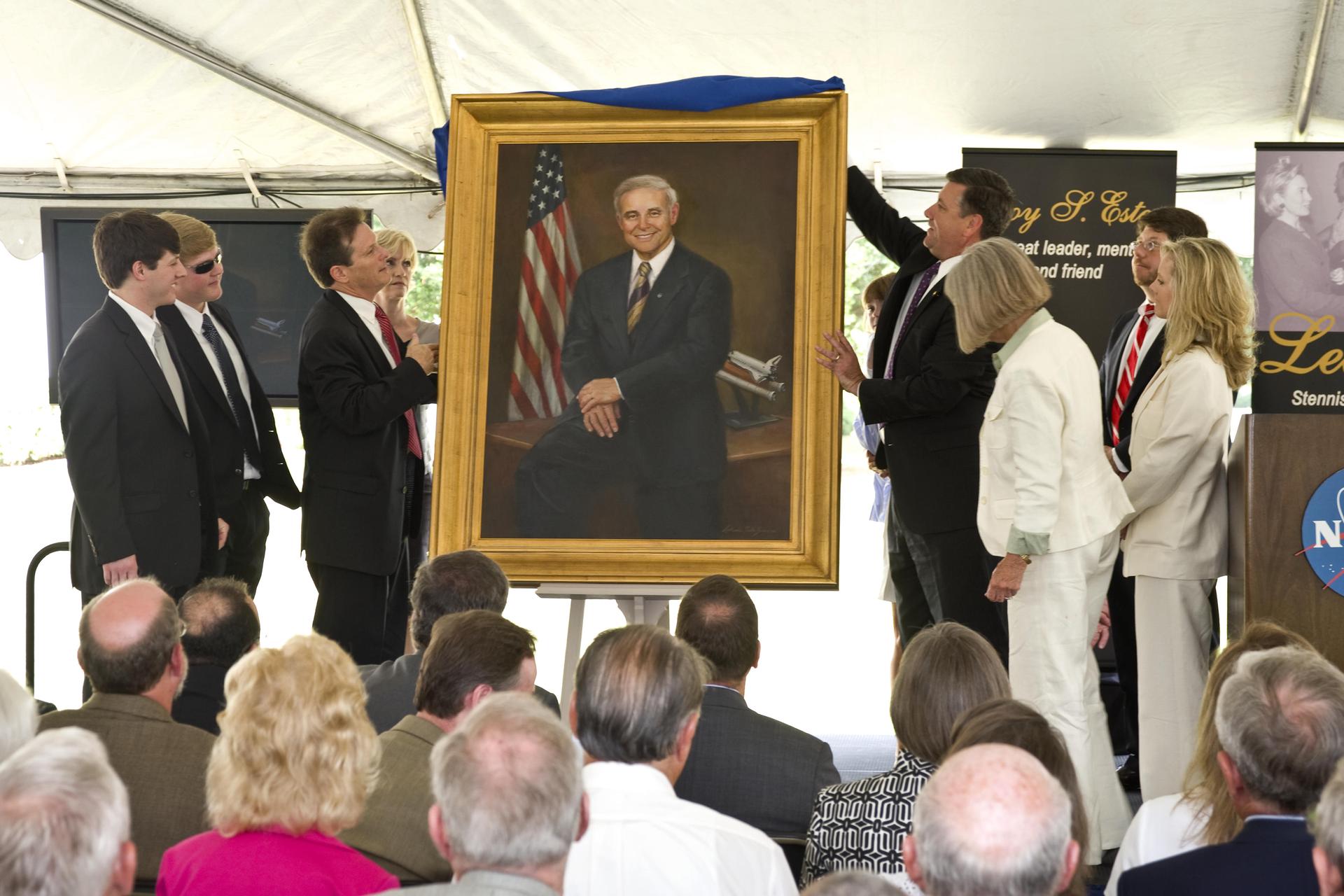
Goldin’s announcement on a Friday was so sudden that Estess promptly flew to Houston and walked into the administration building the next morning where he spoke with James D. Wetherbee, commander of STS-102, which was scheduled to launch in early March. The commander voiced his and the crew’s concerns about the very abrupt leadership transition. Estess later recalled how tough the weekend was. The challenge continued when the workweek began. On Monday, he and the former Center Director George W.S. Abbey met with the astronaut corps. When Abbey finally left JSC, Estess remembered, “It was hard for George. It was hard for me. It was hard for the Center. It was hard for Dan Goldin. It was hard for everybody.”
His first task was to stabilize the center, so he met with people and talked to them. As JSC employees worried what budget cuts might have on the center, Estess tried to reassure his employees and remind them of their expertise and successes. “Do we have some challenging times ahead? Yes,” he admitted. “But are there prospects for a strong and healthy space program present also? Yes. I am confident from what I’ve seen in the past couple of weeks that JSC will continue to be the strong, vibrant focal point for human space flight that it has always been.”
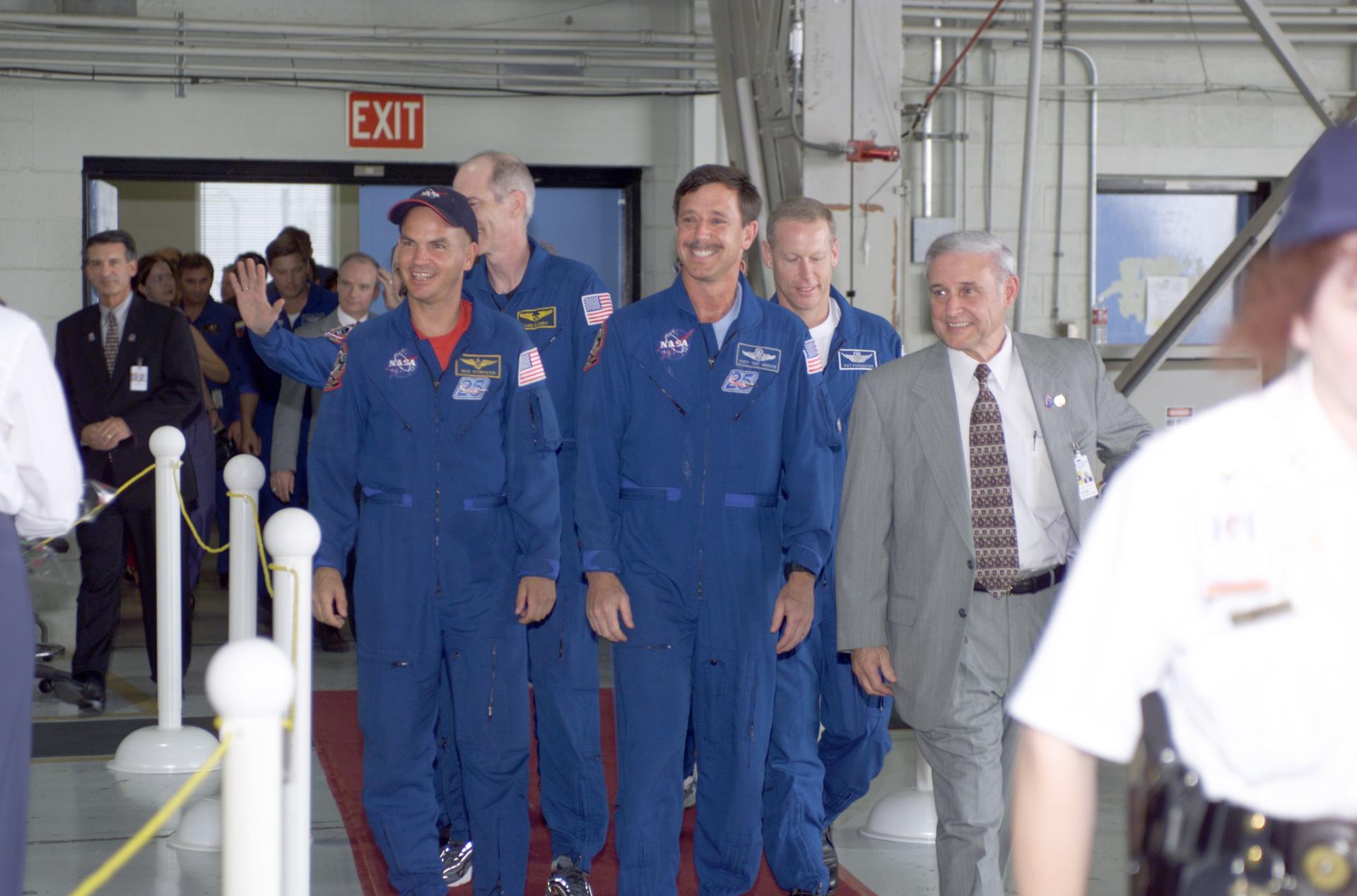
When it came to the space station, Estess pressured the program and Johnson workforce to “think differently about cost.” The president and Congress believed that NASA, Johnson in particular, had not understood the true development costs of the station and had not carefully tracked its budget. He told employees, “If you people don’t try to figure out how to do this business just as safe or safer, at a much reduced [cost], then you’re going to be put out of business by international competition. It will not be Washington that puts [us] out of business, it’ll be the competition.” The program responded positively to his message to reduce cost but Estess took no credit for this change in attitude. Instead, he pointed to the leadership of Space Station Program manager Tommy W. Holloway.
During his short time in Houston, Estess oversaw the launch of six space shuttle missions, responded to the 9/11 terrorist attacks, restructured the center’s science program, and dealt with Abbey’s departure from Johnson. After more than thirteen months in Houston, he returned to Mississippi. But before leaving, he thanked the employees at the center for the opportunity to serve as their center director. When the agency announced his retirement in the summer of 2002, NASA Administrator Sean O’Keefe called Estess “a steadying influence at NASA. He’s a no-nonsense manager and a straight shooter who knows how to cut through a problem to find a solution,” just as he had at Johnson. “Roy’s leadership, candor and friendship will be missed.” Estess died in 2010 at the age of 71.
Visit the NASA Oral History Collections to read oral histories with NASA’s Johnson Space Center Directors and others across NASA.


























